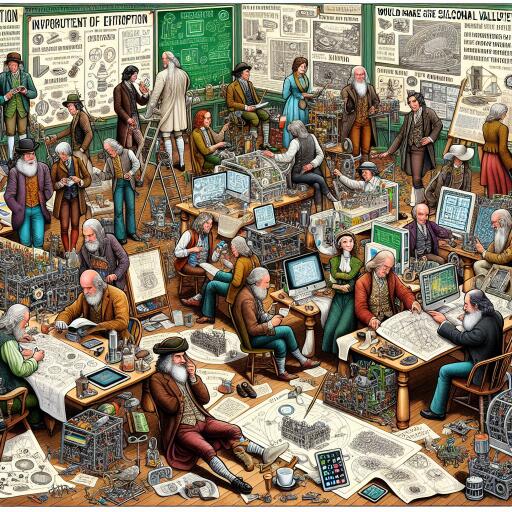
The Unheralded Pioneers of Technology: A Tale From Boston’s Bohemian Labs
In the annals of technological innovation, the spotlight often shines brightest on the titans of Silicon Valley, lauding their revolutionary breakthroughs and often tumultuous ascendancy to global recognition. Yet, this narrative, while captivating, scarcely delves into the lives of those who ventured beyond the conventional, only to see their dreams dissipate in the shadow of mainstream success. These are the visionaries whose stories diverge from the familiar arc of challenge, triumph, and dominance. Instead, they embarked on paths fraught with risk, not just financially but in pursuit of ideals that Silicon Valley, with its billion-dollar valuations and mainstream ambitions, wouldn’t dare entertain.
Imagine the possibility of an alternative technological landscape shaped by the dreams of those who dared to think differently. Among these dreamers were a group of 1960s hippies nestled in Boston’s North End, operating from a secluded and privately funded lab at 33 Lewis Wharf. Here, a collective of tech aficionados, including alumni from MIT, aspired to redefine the very essence of personal computing. They envisioned a future where technology was not just functional but intimate, ecological, and idiosyncratically human. Their quest was to forge devices that resonated with the tactile curiosity and emotional richness of human interaction.
This ambitious endeavor is chronicled in the narrative of a secretive lab known as the Environmental Ecology Lab. This collective envisaged a world where gadgets were more than mere tools; they were companions attuned to the nuances of human mood and preference. In their conception, technology would mirror the subtlety of human relationships, capable of nurturing our fleeting interests and evolving alongside us.
Among their avant-garde projects was Telegrasp, a device poised to transform communication by transcending the barriers of distance and the limitations of existing sensory experiences. This invention sought to enable remote tactile communication, allowing individuals to physically ‘feel’ the presence of one another, despite geographical separations. Such an innovation underscored the lab’s broader mission: to challenge the sterile interactions dictated by conventional computing interfaces and foster a more immersive, sensory-rich engagement with technology.
Despite their groundbreaking ideas and the potential to revolutionize how we interact with machines, the legacy of the Environmental Ecology Lab remains largely obscure. Their vision for technology, deeply humanistic and ecologically aligned, diverged sharply from the priorities of a profit-driven industry. Yet, the implications of their work, and the alternative technological paths they proposed, remain profoundly relevant.
Discovering the history of these unsung innovators reveals not only the potential roads not taken but also the enduring struggle between commerce and idealism in the realm of technology. It highlights the challenges faced by those who seek to prioritize ethical and ecological concerns over market dominance and profit. The saga of the Boston lab serves as a poignant reminder of the complexities inherent in marrying technological innovation with humanistic values.
Their approach, blending technology with artistry and ecological sensitivity, proposed a fundamentally different trajectory for digital advancement. By conceptualizing gadgets and interfaces that embrace the full spectrum of human senses, they aspired to make our interaction with technology a more enriching, imaginative, and dynamic experience.
Yet, despite their noble aspirations, the pioneers of the Environmental Ecology Lab confronted immense challenges. Their reluctance to align with military funding or corporate interests, driven by a commitment to their countercultural values, ultimately marginalized their impact. The dissolution of their collective dream serves as a cautionary tale about the complexities of innovating within a system that often values conformity and profit above ingenuity and ethical considerations.
As we continue to navigate the digital age, the story of these Boston hippies serves as a powerful testament to the importance of diversity in technological innovation. It reminds us that the most transformative ideas often come from the margins, from those brave enough to imagine a different world. In reflecting on their legacy, we are reminded of the potential for technology to be a force for ecological harmony, creativity, and deeper human connection, challenging us to think differently about the future we wish to create.
In the end, their endeavors reveal a crucial lesson: achieving a technology that enriches human experience and nurtures our planet requires more than ingenuity and vision. It demands a collective commitment to reimagining the principles that guide our technological advancements. As we forge ahead, let their story inspire us to embrace the full breadth of human creativity and to consider alternative paths that prioritize the welfare of all beings and the health of our planet.





Leave a Reply